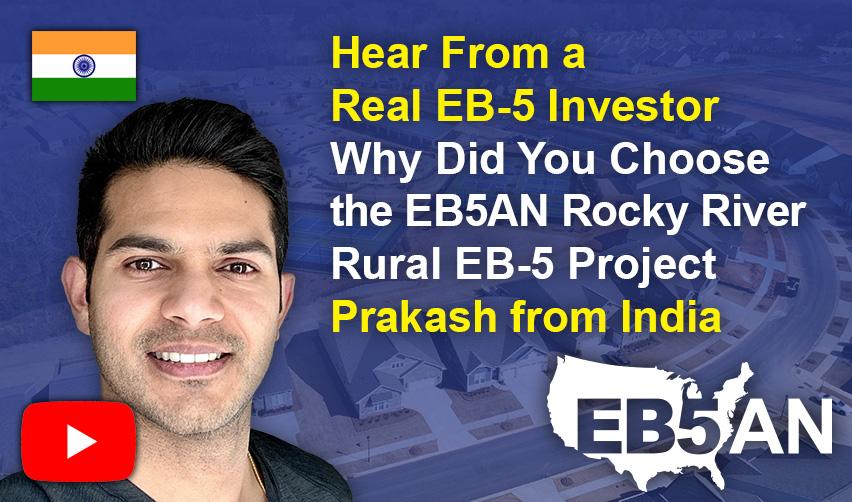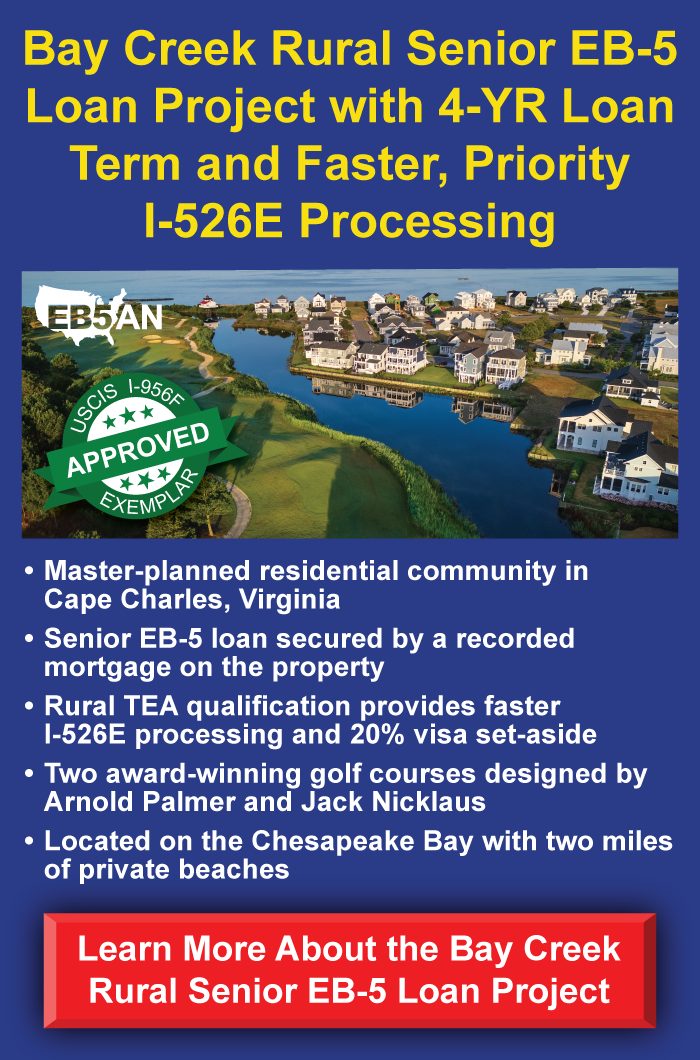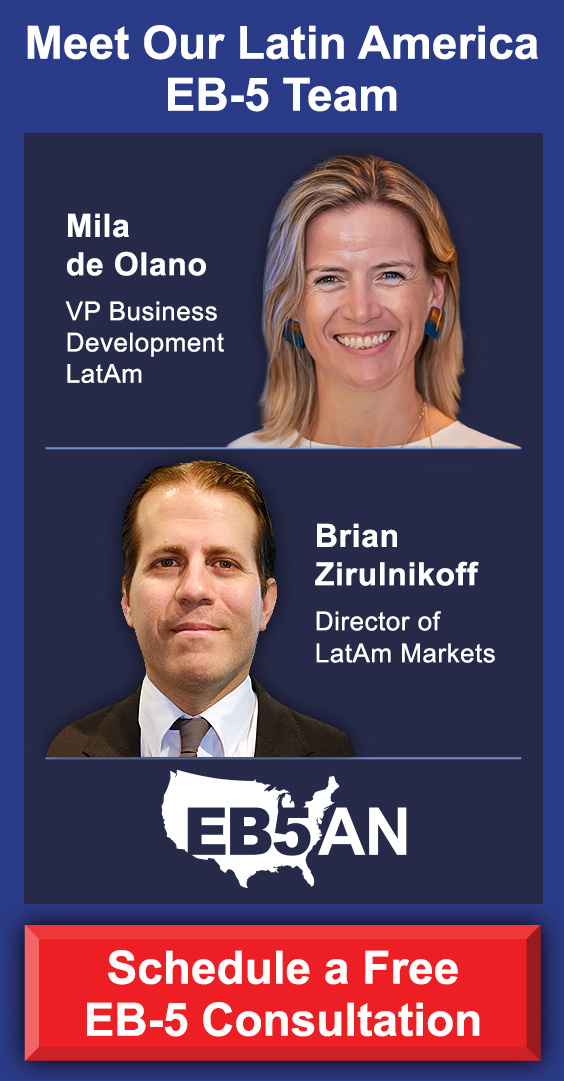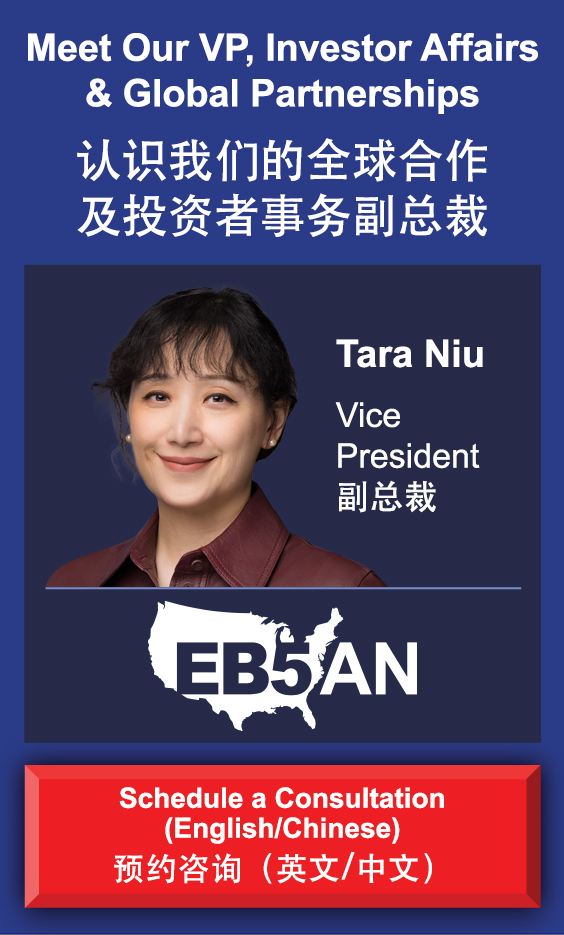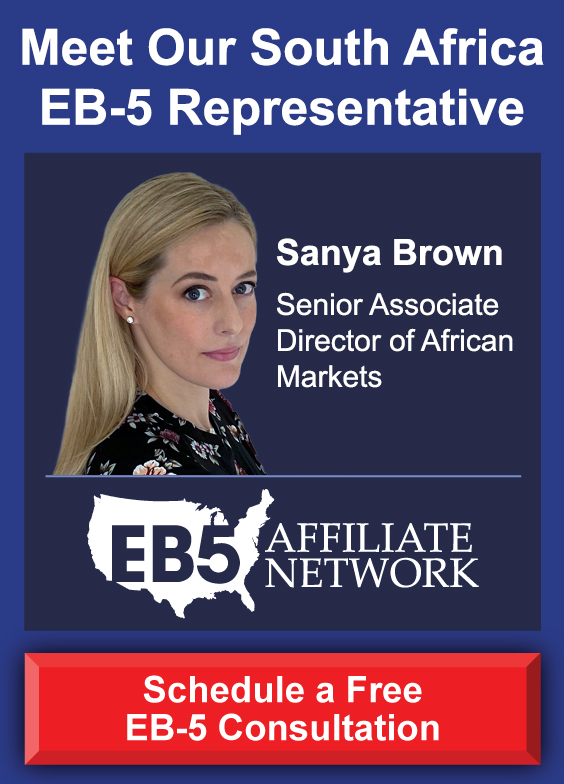I am Prakash Yaji from the southern part of India, near Bangalore. I have lived in the United States for the past eight years.
Very quickly, I decided that I wanted to stay in the United States with my family long term. But finding a permanent U.S. visa that would give us peace of mind was quite a challenge.
During my time in the United States, I was first on an L-1 visa and then on an H-1B. My wife held an L-2 visa and later an H-4 visa. We also have a US-born daughter. I faced a long wait time because my EB-2 priority date was from mid-2018, and the backlog made the process very uncertain. I did not want my family to face a long wait or constant worry about our visa status.
My search eventually led me to the EB-5 investor visa. Having gone through the application process, I’m now happy to share my advice for fellow EB-5 investors, especially H-1B workers from India.
I sincerely believe that the EB-5 program is the easiest way to become a permanent resident and break free from the limitations of H-1B and similar visas.
Watch Prakash’s Full Interview
Watch Prakash’s Interview Highlights
Deciding on the EB-5 Program
As I looked into different visa options, I explored more than one path. One option for Indians was the EB-1, which involves moving to another country, working for a US employer for a year, and then transferring internally. However, that option required moving my family from one place to another and put me in a position where I depended on a US employer for my return. The risk was too great for me, and the backlog for EB-1C was growing too. With these factors in mind, I saw the EB-5 program as the only clear path for me and my family. It offered a current status for Indians in both rural and urban TEAs, so I chose EB-5 to keep my family’s future secure.
Researching Immigration Attorneys
I started by learning about the EB-5 program and how the regional centers worked. I printed the EB5AN guide that outlined the entire process and kept it close for regular reference. Then I began speaking with immigration attorneys. I talked with three different attorneys, each with their own area of expertise. One worked more with clients from India, while others had more US-based experience. All of them had good credentials. After weighing my options and considering both pricing and the capacity to handle my case, I chose Darren Silver’s team. They showed that they could handle my situation well. Their team had enough room to work with me, and their fees were reasonable, which made my decision easy.
Building My Source of Funds Package
With my attorney selected, I moved to the source of funds process for Form I-526E. The team sent me a checklist that explained which documents I needed to collect and upload. They outlined different ways to present my funds. At first, I planned to use many sources to keep most of my stocks intact. That plan would have meant showing four or five different sources of funds. I soon realized that too many sources might bring extra risk. The team helped me settle on a simpler plan. They advised me to liquidate funds from just one or two sources so that the paper trail was easier to follow.
I had already gathered many documents before I picked the attorney. I downloaded my payslips, bank statements, rental property details, HELOC records, and investment brokerage statements. I knew these records were important and secured them ahead of time. After I uploaded all of these documents, the team spent about a week or two reviewing them. They then sent me a list of follow-up questions and recommendations to simplify the submissions. I worked closely with Syed Ali and Anibal from the attorney team. Together, we finalized my source of funds plan over a total of four to five weeks. Their step-by-step guidance made a process that seemed very complex feel clear and manageable.
Comparing Regional Centers and Projects
Alongside the legal process, I spent time reviewing regional centers and their project offerings online. I looked at various types of projects through EB5AN. There were offers for hotels, resorts, and urban TEA projects. I felt more comfortable with projects related to real estate development, particularly single-family housing. I had some experience with single-family residence investments, even though I had never developed a project myself.
The online material provided by EB5AN helped me gain confidence. I read all the project details, reviewed offering documents, and even checked feedback about the developer. I used the online chat tool they offered to ask a few questions. All the information was clear and available without extra hurdles. The ease with which I could find and review documents made the process feel transparent and straightforward. I was not pushed into a hurry to invest, and I had time to compare different options. I appreciated that this process resembled a shopping experience rather than a stressful, last-minute decision that would force me to have all my funds tied up immediately.
Why I Chose the Rocky River Project
When it came time to pick a project, I looked at several options offered by EB5AN. The Rocky River project caught my eye for several reasons. My top priority was to choose a project with low risk and a high chance of receiving my EAD (Employment Authorization Document) and AP (Advance Parole). Although my H-1B visa was stable and I could renew my I-140, it did not give me the additional documents I needed. With the current news and uncertainty in the country, obtaining an EAD and AP quickly became very important for the stability of my family.
The Rocky River Project is part of a rural TEA and focuses on developing single-family housing. I have seen that single-family projects allow for a flexible construction plan. Builders can ramp up construction when sales are high or slow down when sales are lower. This is similar to what large builders like Lennar or D.R. Horton do, which made the idea familiar to me even though I had not seen the houses in person. The project’s design means that builders can sell houses one by one, which keeps the risk down compared to a hotel or a large complex project, where funds are committed upfront and returns may only come at the end of construction.
I also liked the target market for this project. The housing plan was made for customers aged 55 and older. This group tends to have steady savings or funds from retirement, making it more likely that the houses will sell quickly. I looked at the online videos and floor plans on the developer’s website. The houses looked appealing, and the common areas like the clubhouse were inviting. I imagined that if I were nearing retirement and had sufficient money, I would choose a home like one of these. The success of a similar project in Georgia, known as the Twin Lakes Project, gave me further confidence. Additionally, while the project is in a rural TEA, its location is not far from a city. I believe that as the city grows, this area will become even more attractive to buyers.
Another important factor for me was the rural TEA status. My daughter is a US citizen, and I did not want to face the long wait times that can come with an urban TEA. Even though an urban TEA might be current now, the backlog could build over time. The rural TEA status seemed to promise a shorter backlog. I reviewed charts and projections from EB5AN webinars that showed the trends. Even if there was a slight retrogression in the rural areas, the buildup would be much smaller compared to urban areas. This advantage played a major role in my decision.
Executing Subscription Documents and Transferring Funds
Once I settled on the Rocky River Project, I moved ahead with the investment. The process with the EB5AN team was smooth. After selecting my attorney and reviewing all the necessary documents, I signed an NDA to get further financial details. After this step, I received the subscription documents from the team. The offering documents clearly described the cash flow, project timeline, and details about the investment.
Before moving forward, I completed the source of funds process as discussed with my attorney. When the funds and supporting documents were all in order, I received confirmation from my attorney to proceed with the EB5AN project. I then reached out to the team to tell them I was ready. Soon after, I received an email with the subscription documents. I read through the papers, signed them, and sent them back. The whole process of handling the subscription documents took about one to two weeks. I appreciated the clear and timely communication from the team. All the key details about the project and the investment were shared with me well before I had to sign any papers.
After the documents were signed, the next step was to transfer the funds. I had a few questions about the proper account details, such as which account held the escrow funds and how the money would move to the builder’s account. The instructions in the subscription documents were clear. I moved my funds as instructed. When I needed further clarification, I reached out with an email. Jordan provided detailed information about the process. He explained how the funds would move from my bank account to the escrow account, and then from the escrow to the builder’s account. The steps were broken down clearly so that I knew what to expect and when. This clear process helped me feel secure about the movement of my investment.
Advice for Other H-1B Investors Considering EB-5
Reflecting on my journey, I have three main points to share with other H-1B investors considering the EB-5 path. First, start early and hire an attorney as soon as you can. There are many choices when it comes to attorneys and regional centers, and it is easy to get stuck comparing options. However, the time available for Indian investors is limited. Choosing an attorney quickly and confidently is key.
Second, keep your finances in order from the start. It is important to monitor what is deposited in your main bank accounts. Having too many different transactions or deposits outside of your regular salary can draw extra attention. I reorganized my finances a few months before I made my decision to invest. For anyone beginning this process from scratch, I recommend keeping salary accounts clean and separate from other funds. This simple step can help prevent issues during the verification process later on.
Third, when choosing a regional center, look at both the history of completed projects and the project itself. Some people prefer a regional center that has many successfully returned funds and finished projects. Others pay close attention to the details of the project they plan to invest in. I focused on the project—the single-family housing development of the Rocky River Project. I considered whether the project made sense based on my knowledge of real estate. I looked at similar successful projects, like the Twin Lakes Project, and saw that the structure and strategy were familiar. This gave me confidence that the investment would work out.
I also learned that it helps to choose a project with a simple cash flow structure. The Rocky River Project broke down the overall construction into smaller parts—each house was its own milestone. This made the entire process easier to understand and follow. A project that divides a large task into manageable steps gives a clear picture of how and when funds will be used and returned. When you understand the details of a project like this, it can be easier to trust that your money is being used well.
I would not hesitate to recommend EB5AN and Darren Silver’s legal team. I checked the credentials of the attorneys and read testimonials online. I even reviewed their registration with the state bar to confirm they were genuine. It took me about a month to decide, but in the end, the clarity I received with receipt notices from USCIS and the way my case was presented left me with a strong sense of security. The final presentation of my I-526E—including a clear summary of my income, cash flow, and various investments—was simple and easy to understand. Initially, I worried that my case, which involved several types of investments, might be too complicated. However, the team organized everything well. Their efforts helped me see the full source-of-funds process in a way that made sense.
For anyone on an H-1B visa considering EB-5, it is important to make decisions quickly, set up your finances correctly, and choose a project that matches your own knowledge and experience. I took these steps and found the process to be smooth and transparent. I experienced clear communication and strong support from both the attorney team and the regional center. This approach helped me avoid unnecessary stress, and I now feel confident in my investment and my future in the United States.

